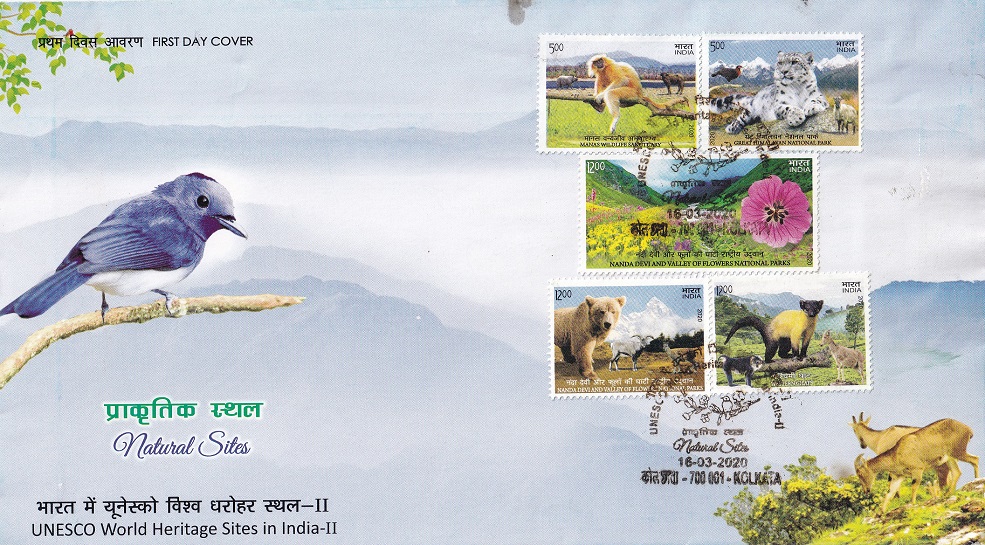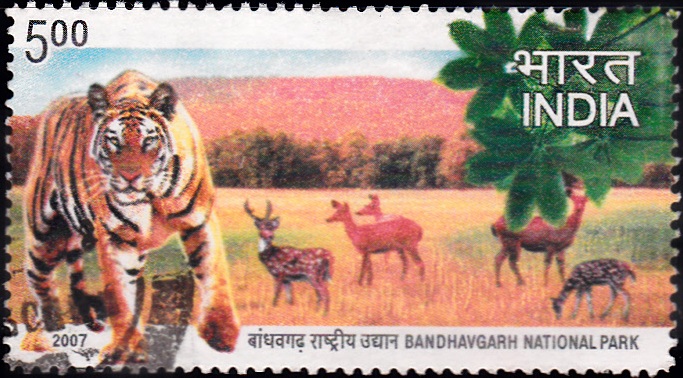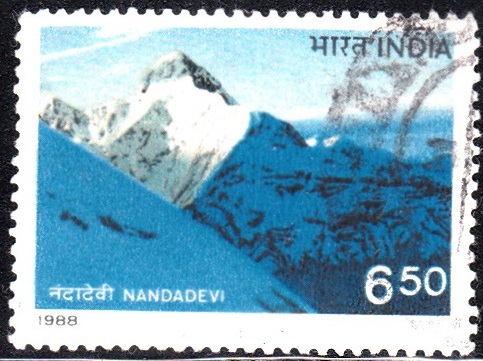
UNESCO World Heritage Sites in India – II
A Miniature Sheet consisting of 5 nos. of postage stamp on the UNESCO World Heritage Sites : Natural Sites :







 Issued by India
Issued by India
Issued on Mar 16, 2020
Issued for : Department of Posts is pleased to release a set of five Commemorative Postage Stamps and a Miniature Sheet on Natural sites under the UNESCO World Heritage Sites in India-II.
Credits :
Stamps/Miniature Sheet/FDC/Brochure/Cancellation Cachet : Shri Brahm Prakash
Type : Miniature Sheet, Mint Condition
Colour : Multi Colour
Denomination : 500 Paise (2), 1200 Paise (3)
Stamps Printed : 500000 each
Miniature Sheets Printed : 110000
Printing Process : Wet Offset
Printer : Security Printing Press, Hyderabad
About :
- UNESCO World Heritage Convention which was established in 1972, recognised various sites of cultural and natural importance around the world. After the latest addition to the list of UNESCO World Heritage Sites, India now has 38 World Heritage Sites and that makes India the country with the 6th largest number of World Heritage Sites in the world.
- MANAS WILDLIFE SANCTUARY
- On a gentle slope in the foothills of the Himalayas where wooded hills give way to alluvial grasslands and tropical forests, lies the Manas Wildlife Sanctuary. The sanctuary was designated a UNESCO World Heritage site in 1985. Manas Wildlife Sanctuary is home to rare and endangered wildlife species such as Pygmy Hog, Golden Langur, Hispid Hare and the Assam Roofed Turtle.
- GREAT HIMALAYAN NATIONAL PARK
- Located in the state of Himachal Pradesh, the Great Himalayan National Park is one of India’s prominent national parks. The National Park was established in 1984 and is spared over an area of 1,171 sq km at an altitude between 1,500 and 6,000 m. In June 2014, the Great Himalayan National Park was added to the UNESCO list of World Heritage Sites.
- The National Park protects over 800 plant species, including many medicinal herbs, 31 mammal species and 209 bird species, as well as amphibian species, reptile species and insect species. A trek of 35 to 45 km in any of the park’s valleys brings one into the high altitude habitat (3,500 m and above) of animals such as Blue Sheep, Snow Leopard, Himalayan Brown Bear, Himalayan Tahr and Musk Deer. Best sightings can be made in autumn (September-November) as animals start their seasonal migration to lower altitudes.
- NANDA DEVI & VALLEY OF FLOWERS NATIONAL PARKS
- The Nanda Devi National Park or Nanda Devi Biosphere Reserve, established in 1982 is a national park situated around the peak of Nanda Devi (7,816 m) in the state of Uttarakhand in northern India. The gentle landscape of the Valley of Flowers National Park complements the rugged mountain wilderness of Nanda Devi National Park. Together they encompass a transition zone between the mountain ranges of the Zanskar and Great Himalaya. The National Park was inscribed a World Heritage Site by UNESCO in 1988.
- Nanda Devi National Park is home to a wide variety of flora and fauna. Some 312 floral species that include 17 rare species have been found here. Fir, birch, rhododendron and juniper are the main flora. Common larger mammals found in this National Park are Himalayan Musk Deer, Mainland Serow and Himalayan Tahr. Goral are not found within, but in the vicinity of the park. Carnivores are represented by Snow Leopard, Himalayan Black Bear and perhaps also Brown Bear.
- One of the most picturesque and colourful natural sights in India is the Valley of Flowers National Park. Nestled in Uttarakhand, this National Park is famous for its charming meadows of alpine flowers. Legends believe it to be the place from where Hanuman collected the Sanjeevanibuti for curing Laxman. This National Park has floral pastures, running streams and beautiful backdrop of mountains. The valley was declared a national park in 1982 and is a World Heritage Site.
- WESTERN GHATS
- The Western Ghats, also known as Sahyadri (Benevolent Mountains), are a massive mountain range that covers an area of 1,40,000 square kilometres parallel to the western coast of the Indian peninsula, traversing the states of Kerala, Tamil Nadu, Karnataka, Goa, Maharashtra and Gujarat. It is a UNESCO World Heritage Site and is one of the eight “hottest hot-spots” of biological diversity in the world. According to UNESCO, the Western Ghats are older than the Himalayas. They influence Indian monsoon weather patterns by intercepting the rain-laden monsoon winds that sweep in from the south-west during late summer.
- The area has over 7,402 species of flowering plants, 1,814 species of non-flowering plants, 139 mammal species, 508 bird species, 179 amphibian species, 6,000 insect species and 290 freshwater fish species. It is likely that many undiscovered species live in the Western Ghats. At least 325 globally threatened species exist in the Western Ghats.
- The major river systems originating in the Western Ghats are the Godavari, Kaveri, Krishna, Thamiraparani and Tungabhadra rivers. The majority of streams draining the Western Ghats join these rivers, and carry a large volume of water during the monsoon months.
- Text : Shri Pallab Bose
Subscribe
Login
0 Comments
Oldest







